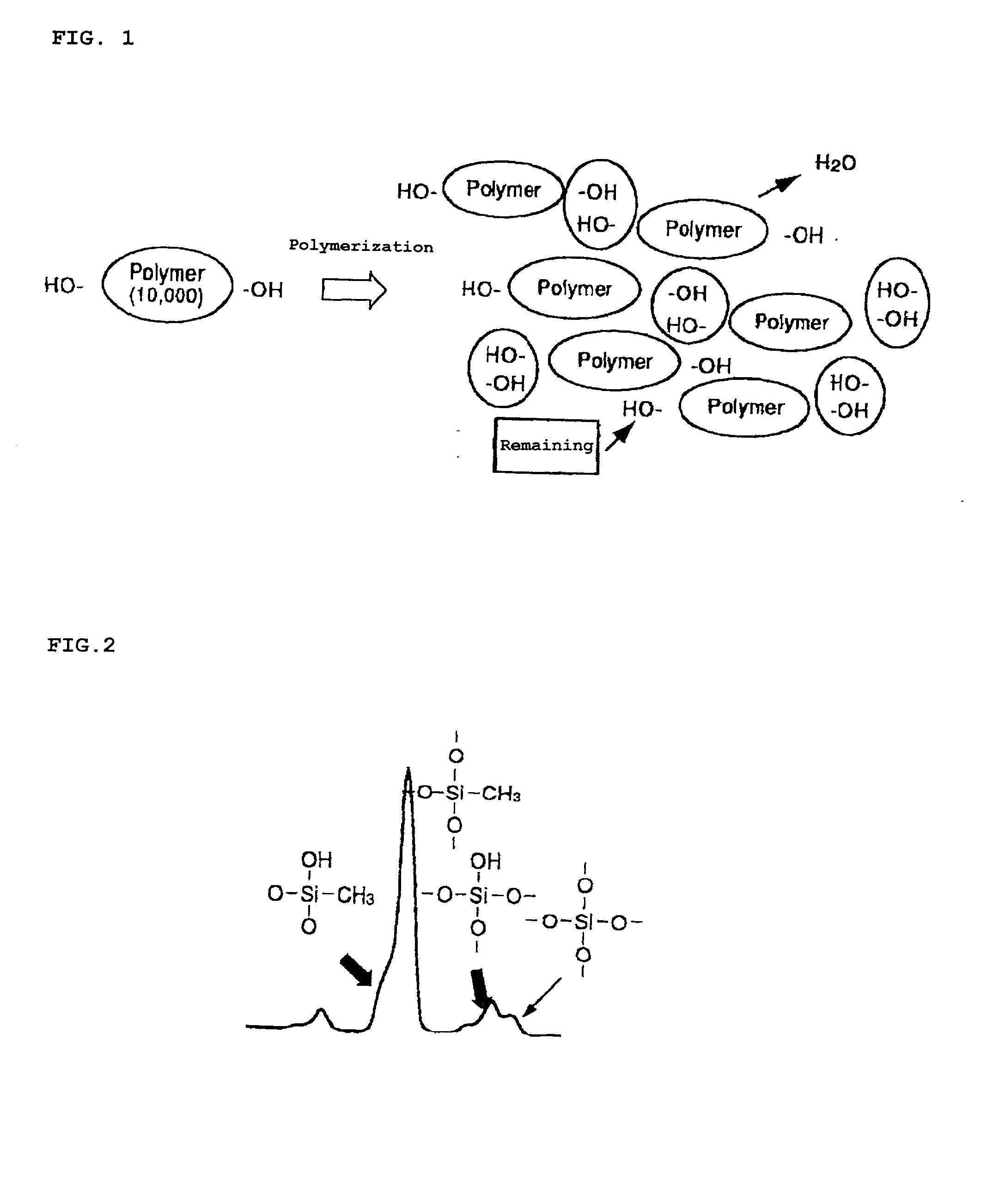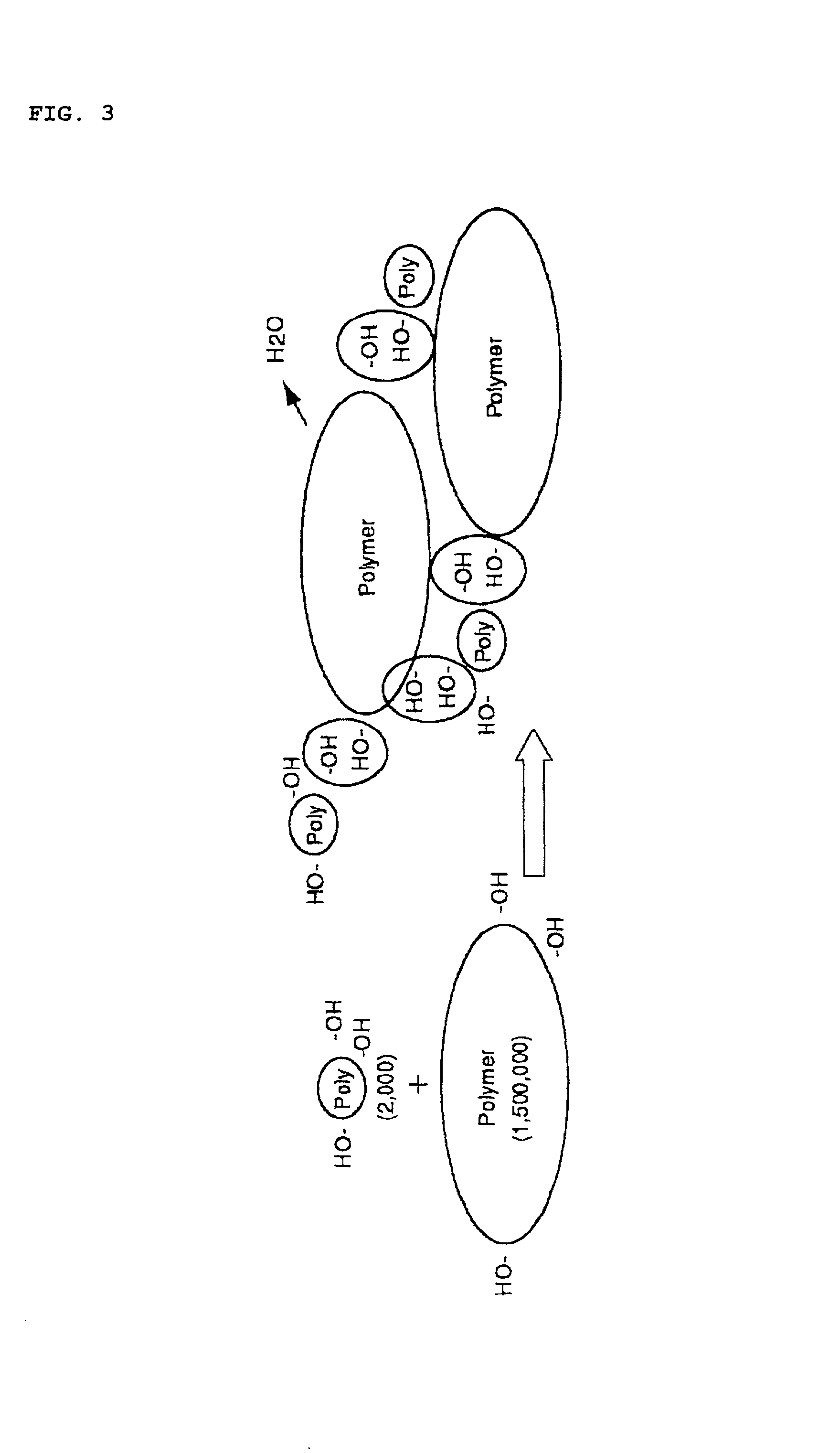Method of forming insulating film and process for producing semiconductor device
a technology of insulating film and semiconductor, which is applied in the direction of transportation and packaging, coating, layered products, etc., can solve the problems of poor cracking resistance, affecting device operation frequency and power consumption, and difficult to use this film as a single-layer interlayer dielectric in lsi
- Summary
- Abstract
- Description
- Claims
- Application Information
AI Technical Summary
Benefits of technology
Problems solved by technology
Method used
Image
Examples
example 2
[0143] In this Example, interlayer dielectrics each consisting of an organosilicon oxide film were formed from a mixture of a first polymer and a second polymer in various proportions (by weight). A copper damassin wiring was further formed thereon to produce semiconductor devices. The organosilicon oxide films were examined for a change in dielectric constant caused by an O.sub.2 plasma.
[0144] FIG. 7 shows sectional views illustrating steps of the semiconductor device production process used in this Example.
[0145] First, an interlayer dielectric 22 comprising an organosilicon oxide film was formed on a silicon substrate 21 having elements (not shown) formed thereon, as shown in FIG. 7A. The organosilicon oxide film was formed in the following manner. First, methylpolysiloxane having a weight average molecular weight of 1,000,000 as a first polymer having a high molecular weight and methylpolysiloxane having a weight average molecular weight of 10,000 as a second polymer having a lo...
example 3
[0157] A chemical solution was prepared by dissolving methylpolysiloxane having a weight average molecular weight of 2,000,000 as a first polymer, methylpolysiloxane having a weight average molecular weight of 2,000 as a second polymer, and methylpolysiloxane having a weight average molecular weight of 20,000 as a third polymer in cyclohexanone as a solvent. The first, second and third polymers were used in a proportion of 30 / 20 / 50 by weight. The polymers used here each were a compound represented by general formula (1) wherein CH.sub.3 / Si was 0.72.
[0158] An interlayer dielectric comprising an organosilicon oxide film was formed on a silicon substrate having a buried copper wiring in the same manner as in Example 2, except that the chemical solution obtained above was used.
[0159] In the interlayer dielectric thus formed, no unevenness in film quality was observed. This interlayer dielectric was a homogeneous film. It is thought that due to the use of the three polymers differing in ...
PUM
| Property | Measurement | Unit |
|---|---|---|
| Angle | aaaaa | aaaaa |
| Percent by mass | aaaaa | aaaaa |
| Temperature | aaaaa | aaaaa |
Abstract
Description
Claims
Application Information
 Login to View More
Login to View More - R&D
- Intellectual Property
- Life Sciences
- Materials
- Tech Scout
- Unparalleled Data Quality
- Higher Quality Content
- 60% Fewer Hallucinations
Browse by: Latest US Patents, China's latest patents, Technical Efficacy Thesaurus, Application Domain, Technology Topic, Popular Technical Reports.
© 2025 PatSnap. All rights reserved.Legal|Privacy policy|Modern Slavery Act Transparency Statement|Sitemap|About US| Contact US: help@patsnap.com



